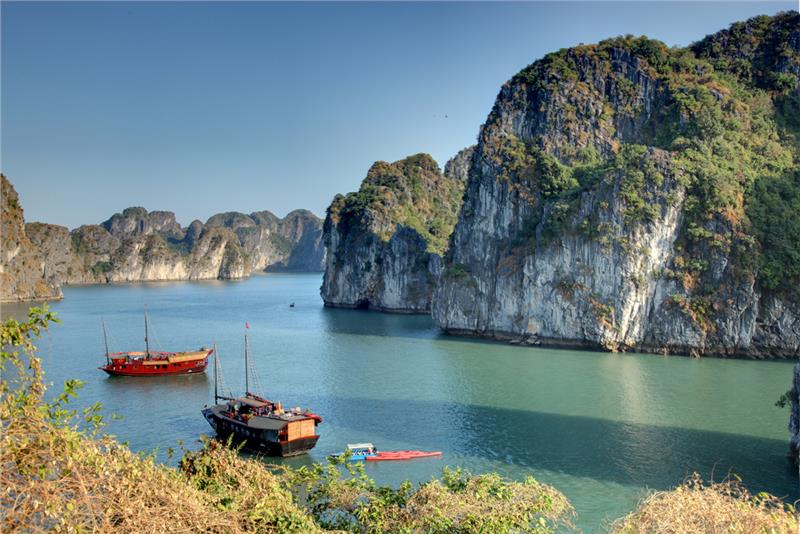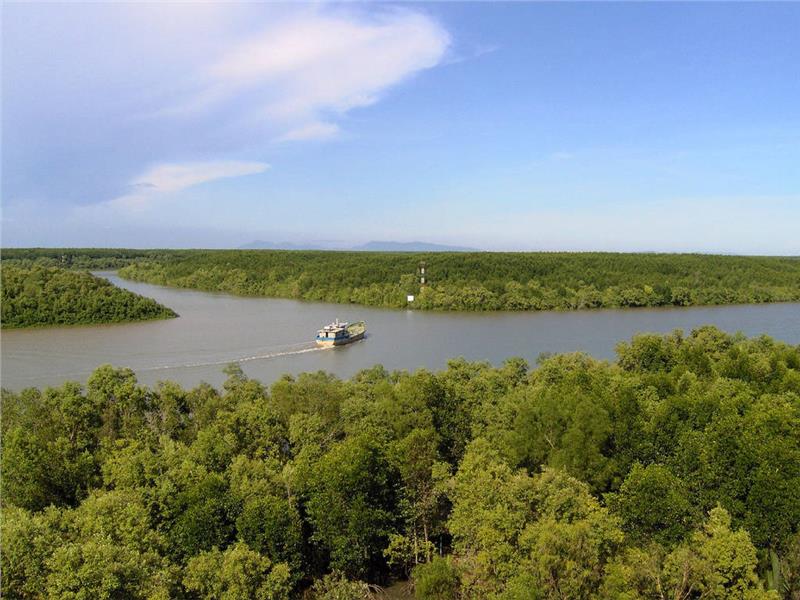According to Smarter Travel, Halong Bay has thousands of big and small islets and islands with turquoise waters all year round. Travelers coming here often have great experiences on overnight Halong Bay cruises and contemplate the amazing sunset on peaceful beaches. Halong Bay is recognized by UNESCO for several time with thousands of majestic and lively islets and islands which were created by the Nature. Halong Bay has a wonderful seascapes, which creates a great potential of tourism in Quang Ninh in particular and Vietnam tourism in general. Halong Bay is a unique natural world heritage, as the destination possesses important vestiges of the formation history and the development of the Earth. It is the cradle of ancient Vietnamese people. At the same time, this is an outstanding masterpiece of shaping art of the Nature with the various appearances of thousands of stone islands and limestone islets, along with many amazing caves gathering to create a mysterious but exciting world in Halong.

In addition, Halong Bay is the convergence of the high biological diversity with typical ecosystem of various thousands of fauna and flora system. The place is also related to heroic cultural and historical values of Vietnam. Halong Bay features a stone island system and beautiful caves. Island in Ha Long has two types: limestone and schist. They concentrate in two main areas: in the southeast of Bai Tu Long Bay and southwest of Halong Bay. This is the oldest image of the terrain with tectonic age of 250 - 280 million years. It is the result of tectonic process of the earth. The process of karst erosion and weathering almost completely Halong creates a unique Halong Bay in the world.

Son Doong is the biggest cave in the world with the length of nearly 9km, containing the longest underground river and a forest. The cave was discovered in 1990 by a local people named Ho Khanh. However, until the year of 2009, the inner of the cave was officially discovered and explored by a British caving exploration team. The National Geographic once recognized Son Doong as a second-to-none place in the world. Although being located in the remote area of Quang Binh Province with rough terrain, the beauty of Son Doong Cave appeals the curiosity of explorers, photographers, and film makers. Son Doong Cave was formed about 2-5 million years ago, when the river flew through the limestone. The river flows made erosion and created a huge tunnel under the ground below the mountain. At the soft rocks area, the ceiling collapsed, forming holes that became huge domes of cave.

Can Gio not just has many mangroves, but also possesses many values about biological researches with more than 200 fauna and 150 flora systems. Can Gio Mangrove Forest is located in a coastal district in the Southeast of Ho Chi Minh City, about 50km from the center. The terrain is dissected by rivers and canals. There is no fresh water here. Can Gio tourism is attractive by mangroves, and pristine beaches. Tourists often visit Can Gio in day tours, or come here on the weekend. The mangroves in Can Gio belong to the world's biosphere reserve with diverse fauna and flora system. Travelers in Vietnam tours to Can Gio can freely explore famous attractions such as bird sanctuary, Doi Lagoon, and crocodile farm... to enjoy interesting activities here. Some favorite activities are fishing, crab fishing, sailing, and catching fish by net...

Belows are top 27 amazing natural wonders in Asia voted by Smarter Travel: Halong Bay (Vietnam), Longdong (Taiwan, China), Chocolate Hill (Philippines), Flaming Cliffs (Gobi, Mongol), Marble Field (India), Thi Lo Su Waterfall (Thailand), Zhangjiaje National Park (China), Al-Hasa Oasis (Arab Saudi), Tubbataha Coral Reef (Philippines), Krast Mountain and Cave (Guilin, China), Puerto Princesa Subterranean River National Park (Philippines), Kelimutu Mountain (Indonesia), Kuang Si Waterfall (Laos), Geysers Valley (Russia), Okama Lake (Japan), Tojinbo Stone Cliffs (India), Son Doong Cave (Vietnam), Manjanggul Lava Tunnel (South Korea), Ta Prohm Temple (Siem Reap, Cambodia), Tiger Leaping Defile (China), Gunung Mulu National Park (Borneo, Malaysia), Stone Forest (China), Taroko Defile (Taiwan, China), Lion’s Rock (Sigiriya, Sri Lanka), and Can Gio (Vietnam).